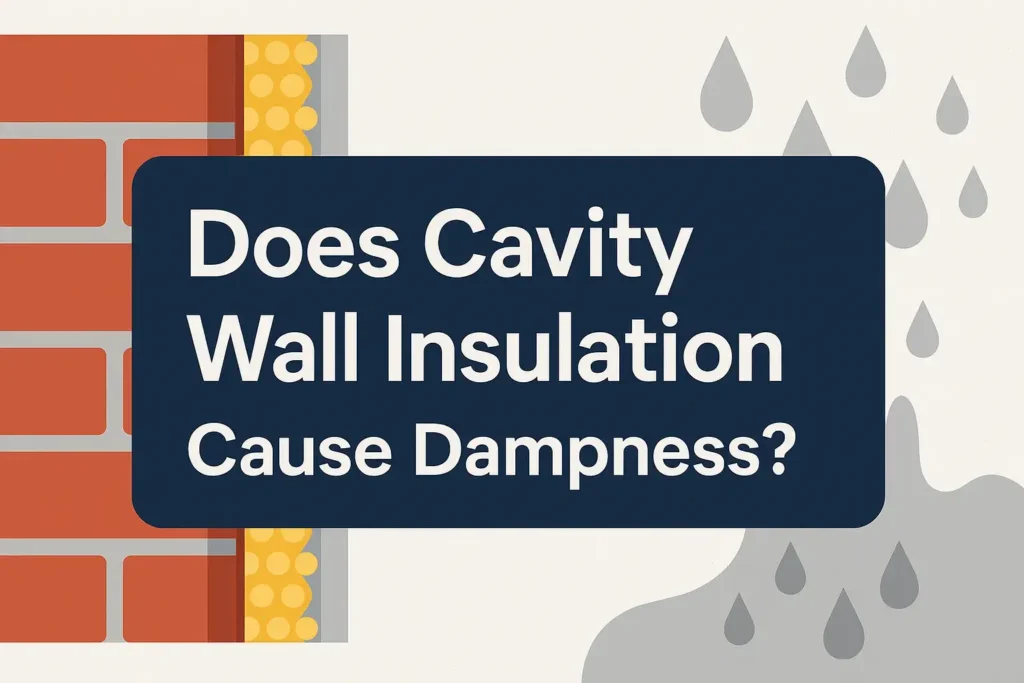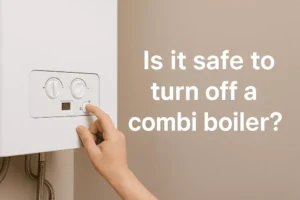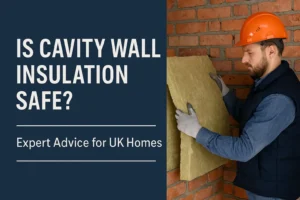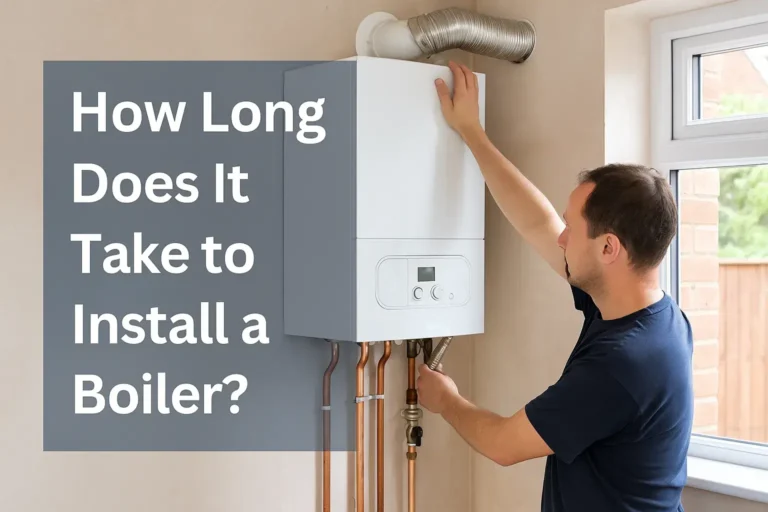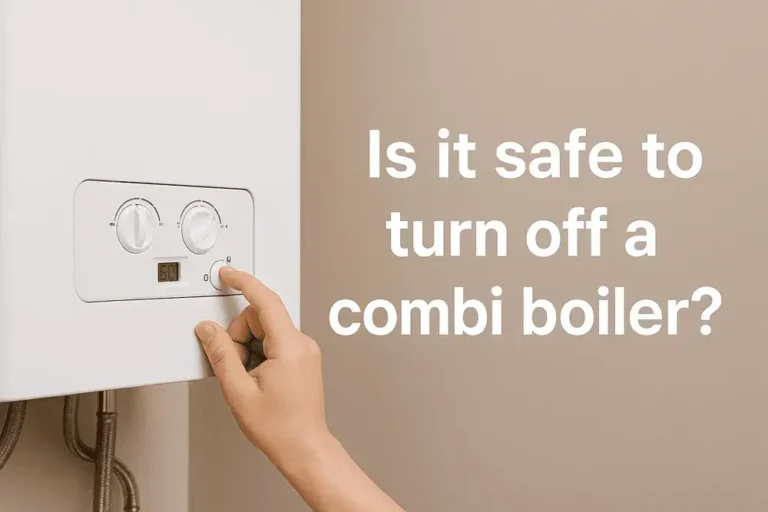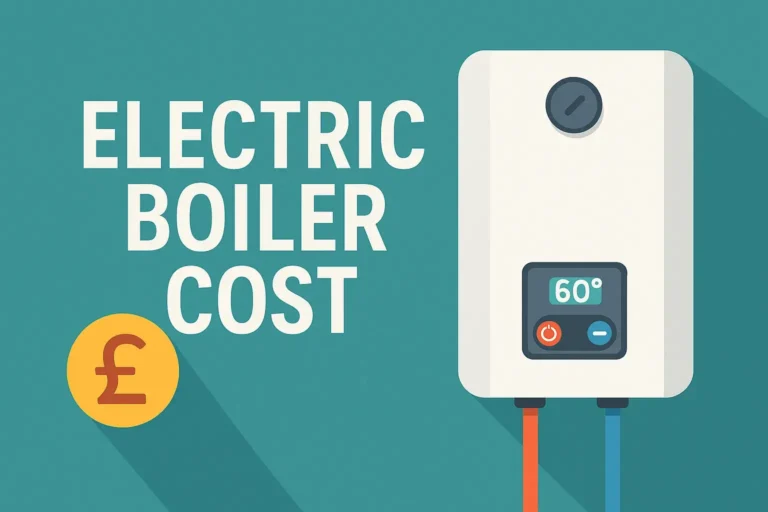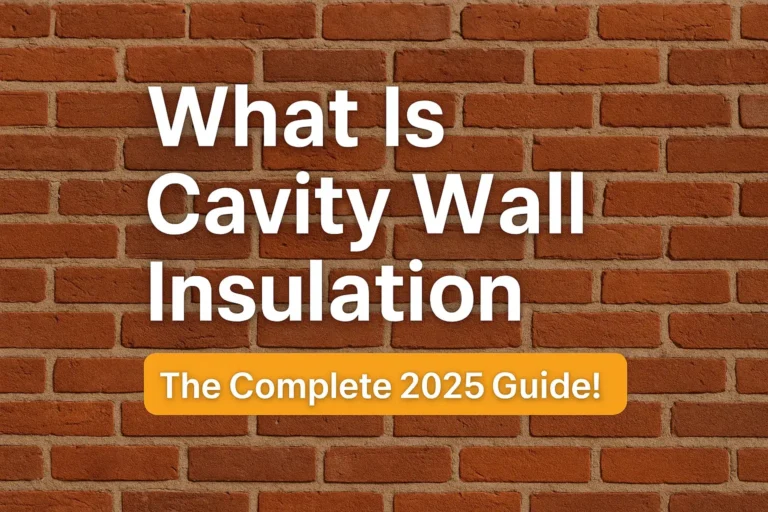Cavity wall insulation does not cause dampness when installed correctly in a suitable property. However, if the walls are damaged, poorly maintained, or located in areas with high wind-driven rain, moisture can become trapped leading to damp, mould, or condensation problems. These issues are almost always due to poor installation, inadequate surveys, or choosing insulation for homes where it isn’t appropriate.
Table of Contents
ToggleCavity wall insulation remains one of the most effective ways to improve energy efficiency but only when done right. In this guide, we’ll explain how to avoid moisture issues, how to spot signs of damp linked to insulation, and what to do if problems occur after installation. We’ll also share how H&R Energy Solutions ensures all our installations are compliant, risk-free, and eligible for ECO4 and GBIS grants.
What Is Cavity Wall Insulation and Why Is It Used?
Cavity wall insulation (CWI) is a method of improving the thermal efficiency of a building by filling the gap (or “cavity”) between the inner and outer walls with insulating material. This reduces the amount of heat escaping through the walls, making homes warmer, more energy-efficient, and cheaper to heat.
How Cavity Walls Are Designed to Manage Moisture
Most homes built in the UK after the 1920s were constructed with cavity walls. These consist of two layers (known as leaves) of brick or block, separated by a narrow gap. This air gap was originally designed not for insulation, but to reduce moisture transfer. When rain hits the outer wall, any water that penetrates can run down the inner face of the outer wall and exit through weep holes near the base keeping the inner wall dry.
By maintaining a clear cavity, this system works as a natural barrier against penetrating dampness. That’s why filling the cavity with insulation must be done with care the wrong approach can compromise the wall’s ability to handle moisture.
Benefits of Installing Cavity Wall Insulation
When professionally installed in a suitable property, cavity wall insulation provides multiple long-term benefits:
- Reduced heat loss: Around 33–35% of all heat loss in homes occurs through uninsulated walls.
- Lower energy bills: CWI can save homeowners up to £300 a year on heating costs.
- Improved indoor comfort: Insulation helps maintain stable internal temperatures.
- Smaller carbon footprint: By using less energy, your home produces fewer CO₂ emissions.
- Boosts EPC rating: Homes with insulation score higher on Energy Performance Certificates, which helps with compliance and property value.
However, none of these benefits matter if the property is unsuitable for CWI or if the installer skips essential checks. Check if cavity wall insulation is worth it or not?
Check If You’re Eligible for Free Insulation
Wondering if you qualify for free cavity wall insulation?
Check If You Qualify For FREE Cavity Wall Insulation
Fill out our quick form; it only takes 60 seconds. No commitment. Just clarity.
How Does Cavity Wall Insulation Cause Dampness?
While cavity wall insulation is generally safe and effective, it can cause dampness if the property isn’t suitable or if it’s installed poorly. In these cases, the insulation may trap moisture, create cold spots, or act as a bridge for water to pass from the outer wall to the inner wall exactly what cavity walls were originally designed to prevent.
Let’s break down the most common causes:
1. Wind-Driven Rain in High-Exposure Zones
Certain areas of the UK such as the west coast of Scotland, Wales, Cornwall, and parts of the North West experience frequent wind-driven rain. According to the Building Research Establishment (BRE), these regions fall into Exposure Zones 3 and 4, where rain is more likely to penetrate the outer wall.
If the cavity is filled with insulation in these zones without proper weather protection or breathable coatings, moisture can saturate the insulation and transfer across to the inner wall, causing internal damp patches.
2. Saturated External Walls and Porous Brickwork
Older properties often have porous bricks or degraded pointing. If the external masonry becomes saturated during heavy rain and the insulation is in direct contact with it, water can wick through the insulation material and into your internal walls.
This is especially risky if the cavity was intended to act as a moisture buffer once filled, that buffering space is gone.
3. Bridging the Cavity – How Moisture Gets Through
For CWI to work, the insulation needs to be evenly distributed and not obstructed. However, in many retrofit installations, debris such as old mortar (called “snots”), corroded wall ties, or rubble can form moisture bridges between the two walls.
These bridges allow water to bypass the insulation and seep into internal surfaces leading to penetrating damp or mould growth.
4. Poor Workmanship and Incomplete Filling
In some installations, corners may be cut to reduce time or cost. This can result in:
- Voids or gaps in the insulation
- Overpacked sections cause compression
- Insufficient material used in large cavities
These irregularities cause cold spots, where warm, moist internal air condenses on colder wall sections a recipe for internal mould and black patches.
5. Blocked Air Bricks and Reduced Ventilation
Another common cause of moisture issues is blocked ventilation. Some installers mistakenly fill around or cover air bricks and vents during the injection process. This blocks essential airflow in the home, raising humidity levels and leading to condensation on internal surfaces, especially in kitchens, bathrooms, and unheated rooms.
6. Cold Spots and Internal Condensation
Even when no external water is getting in, condensation dampness can still be a problem if:
- Ventilation is inadequate
- The insulation is uneven
- Humidity inside the house is high
In these cases, warm moist air hits cold areas of the internal wall (caused by missing insulation or thermal bridging), resulting in water droplets, black mould, and musty odours.
🔎 Related post: How Long Does Cavity Wall Insulation Last?
Areas in the UK Where Cavity Wall Insulation Can Be Risky
Cavity wall insulation isn’t a one-size-fits-all solution. In certain parts of the UK, the risk of damp caused by wind-driven rain is significantly higher making CWI either unsuitable or in need of additional protection like breathable coatings.

Map of BRE Exposure Zones
The Building Research Establishment (BRE) classifies UK regions into four zones based on their exposure to wind-driven rain. These zones help assess whether a property is at risk of moisture ingress when cavity wall insulation is installed.
- Zone 1 – Very low exposure (typically inland, sheltered areas)
- Zone 2 – Low to moderate exposure
- Zone 3 – High exposure
- Zone 4 – Very high exposure (frequent wind-driven rain)
Homes in Zones 3 and 4 require extreme caution before insulation. In many cases, they are deemed unsuitable unless treated with additional protective measures such as water-repellent wall coatings.
Typical High-Risk Regions
Properties in the following areas are particularly vulnerable to moisture ingress if cavity walls are filled:
- West Coast of Scotland
- Wales (particularly West Wales)
- Cornwall and Devon
- Cumbria and North West Coastline
- Parts of Northern Ireland
These regions regularly face intense storms and horizontal rainfall. If external walls are porous or cracked, they can quickly become saturated, transferring moisture to insulation and internal walls.
What This Means for Your Home
If you live in one of these areas, it doesn’t automatically mean CWI is off-limits but it does mean your home must be professionally assessed first. The external masonry should be:
- In excellent condition
- Treated with breathable weatherproofing (like ProPERLA or Stormdry)
- Properly ventilated with unblocked air bricks
💡 At H&R Energy Solutions, we assess your property’s BRE exposure zone during every survey and advise honestly if cavity wall insulation is unsuitable.
Signs Your Cavity Wall Insulation May Be Causing Damp
Damp problems related to cavity wall insulation often appear months or even years after installation, making them difficult to trace. If you’ve recently had cavity wall insulation installed or suspect existing insulation might be failing here are the key warning signs to watch for.
Physical Symptoms to Watch For
These are the most visible signs that moisture is present and may be linked to your cavity wall insulation:
- Damp patches or tide marks on internal walls, especially after heavy rain
- Peeling or bubbling paint and wallpaper near external-facing walls
- Black mould spots, particularly around windows, corners, or behind furniture
- Condensation on walls, not just windows, especially in colder rooms
- Crumbly or soft plaster, indicating saturation underneath
- Rust marks where metal wall ties may be corroding internally
These symptoms tend to appear inconsistent and localised, unlike rising damp, which typically follows a uniform pattern along the base of walls.
How Long After Installation Does Damp Appear?
Damp caused by CWI often doesn’t appear immediately. It may take:
- Several weeks to months if caused by blocked vents or cold spots
- 6–24 months if due to wind-driven rain or saturation of the insulation
- Even years if the initial installation had small voids or bridging that worsened over time
This delay is why many homeowners initially blame other issues when in fact, the insulation is the underlying cause.
Are Your Energy Bills Going Up Instead of Down?
Insulation that becomes damp or saturated loses its thermal efficiency. Instead of keeping heat inside, it can act as a thermal bridge allowing heat to escape faster and causing cold spots. You may notice:
- Your boiler running more often
- Increased heating costs, despite having insulation
- Certain rooms still feel cold and draughty
If your energy bills have increased since the insulation was installed, this is a red flag that something has gone wrong.
What Happens If Damp Is Left Untreated?
If you suspect your cavity wall insulation is causing dampness don’t ignore it. What may start as a small patch of moisture can quickly escalate into a much bigger problem affecting your health, your home’s structure, and your wallet?
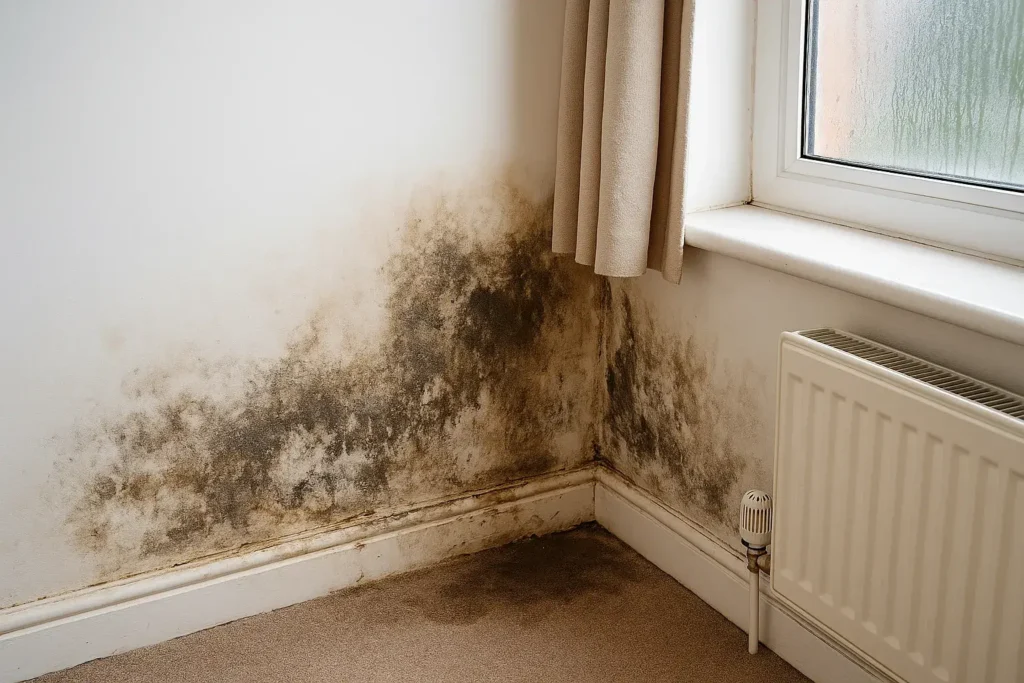
Health Risks of Mould and Damp Air
A damp home provides the perfect environment for mould, bacteria, and dust mites all of which pose health risks. According to the NHS and World Health Organization, exposure to damp and mould can cause or worsen:
- Asthma and respiratory conditions
- Allergies and skin irritation
- Eye, nose, and throat infections
- Weakened immune response in children and older adults
Black mould, in particular, is a sign that moisture is persistent and ventilation is inadequate. The longer it goes untreated, the more likely it is to impact your health, especially in poorly ventilated spaces like bedrooms or lounges.
Structural Problems from Water Ingress
When insulation inside the cavity gets wet, it not only becomes ineffective it can also cause structural deterioration. Common long-term risks include:
- Corroded wall ties: Moisture accelerates rust, compromising structural stability
- Cracking or bowing of external brickwork
- Delaminated plaster and crumbling internal finishes
- Saturated timber framing in older homes (especially pre-1930s)
Over time, these issues can lead to expensive repairs or even wall failure in extreme cases.
Reduced Thermal Efficiency and Higher Heating Bills
Wet insulation acts more like a sponge than a thermal barrier. Once saturated, it:
- Loses its ability to trap heat
- Creates cold spots inside the home
- Increases condensation, especially in winter
- Forces heating systems to work harder
This can result in heating bills increasing, not decreasing which defeats the entire purpose of having insulation in the first place.
⚠️ Don’t wait until damage spreads. If you notice mould, musty odours, or rising energy bills, it may be time to get your insulation assessed or even removed and replaced.
How to Prevent Damp Before Installing Cavity Wall Insulation
The best way to avoid damp problems from cavity wall insulation is to make sure it’s only installed where appropriate and done by a qualified professional following proper procedures. Cutting corners or skipping key checks increases the risk of insulation failure, internal damage, and long-term moisture issues.
Here’s how to protect your home from the start:
Importance of a Proper Retrofit Assessment
Before installing insulation, a retrofit assessment should always be carried out in line with PAS 2035 standards (as required under ECO4 and GBIS schemes). This assessment identifies:
- Whether the property is suitable for cavity insulation
- If there are existing defects or damp conditions
- Whether ventilation needs to be improved beforehand
This is not just a box-ticking exercise it’s the most important step in ensuring your home is protected against future moisture issues.
What a Suitability Survey Should Check For
A professional survey should include:
- Cavity width (should be at least 50mm)
- Wall condition (cracked bricks, spalled render, or poor pointing must be fixed first)
- The presence of rubble or mortar snots inside the cavity
- Breathable damp-proof course (DPC) above ground level
- Structural stability of the building
- Wind-driven rain exposure (based on your location and terrain)
- Ventilation and airflow, including open-air bricks and trickle vents
If any of these factors are missing or defective, the installer should either carry out remedial work first or advise you not to install cavity wall insulation at all.
Minimum Cavity Width, External Wall Condition & DPC
- The cavity width must be enough to accommodate insulation without bridging moisture.
- Bricks or pointing must be in good condition even small cracks can let water in.
- The DPC (damp-proof course) must be visible and functioning. If it’s compromised or covered by debris, moisture can rise into the insulation layer.
Without these in place, filling the cavity introduces more risks than rewards.
Ventilation Standards and Air Brick Checks
Blocked or missing air bricks are one of the most overlooked causes of condensation and internal mould after insulation. Before installation:
- All air bricks should be identified and kept clear
- Extractor fans should be functional in wet rooms
- Trickle vents should be installed or upgraded in older windows
- Passive stack or mechanical ventilation may be recommended in airtight homes
Good insulation without good ventilation is a recipe for condensation especially in kitchens, bathrooms, and bedrooms.
What to Do If Your Home Is Suffering from Damp After CWI?
If you’ve noticed signs of dampness after cavity wall insulation was installed, whether it’s cold patches, mould, musty smells or peeling paint, it’s crucial to act quickly. Ignoring the issue can lead to permanent damage and increasing repair costs.
Here’s how to take control and protect your home:
Step-by-Step Remedial Process
- Get a Professional Damp Survey
Hire a qualified surveyor or retrofit professional to assess the extent and source of the damping. A borescope inspection or thermal imaging may be used to check inside the wall cavity. - Identify the Root Cause
Determine whether the dampness is caused by:- Wind-driven rain penetration
- Bridging from debris or insulation
- Blocked or missing ventilation
- Inappropriate property conditions
- Fix Building Defects First
Before replacing or removing insulation, external cracks, pointing, render damage or blocked weep holes must be repaired. - Consider Wall Coatings
In exposed locations, applying a breathable waterproof wall coating (like ProPERLA or Stormdry) may help prevent further moisture ingress without trapping vapour. - Dry Out the Wall and Monitor
Dehumidifiers, heating, and improved airflow can help dry out the walls. Internal finishes may need to be removed and replaced. - Remove and Replace Insulation If Needed
If the insulation is saturated or poorly installed, it may need to be professionally extracted and replaced or not reinstalled at all if conditions aren’t suitable.
Your Rights Under the CIGA Guarantee
Most cavity wall insulation installed in the UK comes with a 25-year guarantee backed by the Cavity Insulation Guarantee Agency (CIGA). If you were given a certificate when the work was completed:
- You can contact the original installer or go directly to CIGA to lodge a complaint
- CIGA may arrange a free inspection and corrective work, depending on your case
- If the installer is no longer in business, CIGA still has a responsibility to support you under the guarantee
If you don’t have a copy of your guarantee, contact CIGA directly with your address details they may still be able to retrieve it.
Can Damp Cavity Wall Insulation Be Repaired or Removed?
Yes, in many cases, damaged or damp insulation can be removed using professional tools and vacuums through small access points in the brickwork. The process typically involves:
- Extracting the material (beads, wool, or foam)
- Cleaning out the cavity
- Allowing the wall to dry
- Repairing the external surface
- Reinstalling insulation only if the wall is made suitable again
🔧 Some insulation types, like foam, are harder to remove and may require more invasive repairs always consult a specialist before proceeding.
Alternatives for Homes Unsuitable for Cavity Wall Insulation
If your property is exposed to high levels of wind-driven rain, has structural defects, or fails a suitability survey, it’s important to know that you still have insulation options. In fact, alternative solutions may offer better protection, comfort, and long-term value without the risk of dampness.
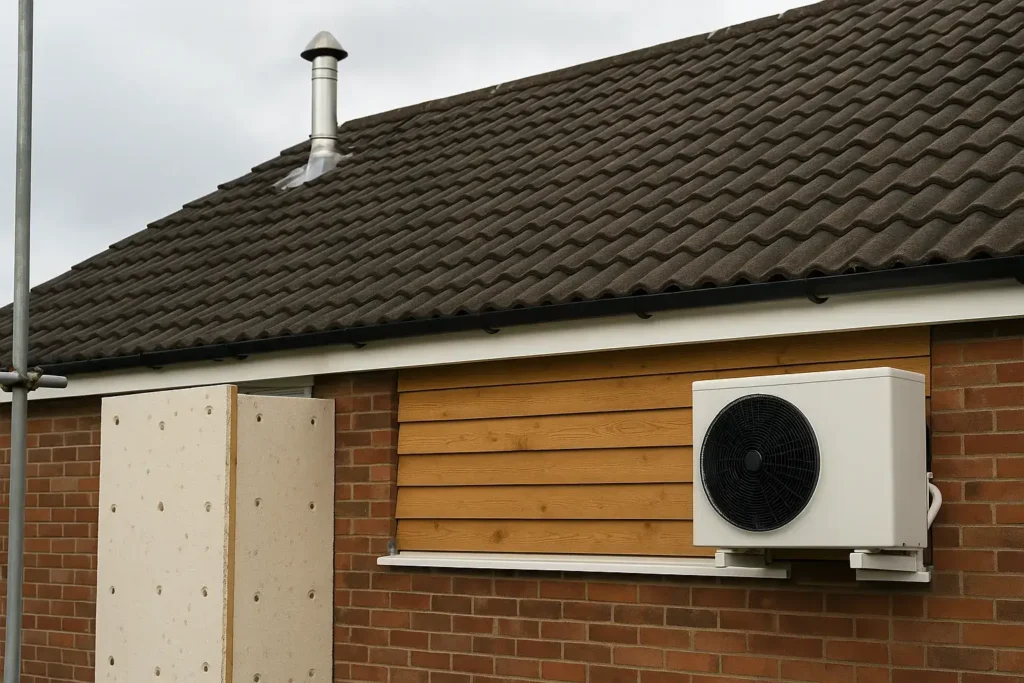
Here are the best alternatives to cavity wall insulation for homes that aren’t suitable:
External Wall Insulation (EWI)
Best for: Solid wall properties, high-exposure locations, or homes with degraded external brickwork
External Wall Insulation involves applying insulation boards to the exterior of your property, followed by a protective render or finish. EWI improves thermal performance while protecting your walls from rain and weather.
Key benefits:
- Doesn’t interfere with internal space
- Adds a weather-resistant barrier
- Reduces heating bills
- Improves appearance with modern finishes
Note: EWI can be more expensive than CWI, but it may be funded under ECO4 for eligible properties.
Internal Wall Insulation (IWI)
Best for: Period homes, listed buildings, or homes where external changes aren’t permitted
IWI involves installing insulation boards or thermal plaster directly onto internal walls. While it can slightly reduce room size, it offers a viable option where external insulation isn’t possible.
Key benefits:
- No exterior appearance changes
- Improved thermal comfort
- This can be done room by room
Watch out: IWI can create cold bridges if not detailed properly installation must be airtight and well-ventilated to prevent condensation.
Breathable Wall Coatings (ProPERLA / Stormdry)
Best for: Properties in Zones 3 or 4 (wind-driven rain), or homes with existing CWI needing extra protection
These are super-hydrophobic coatings that prevent rain from soaking into external brickwork while still allowing moisture vapour inside the wall to escape. They create a “lotus leaf effect” with water beads and roll off.
Key benefits:
- Stops external moisture ingress
- Maintains breathability
- Verified by the Energy Saving Trust
- Extends wall lifespan and improves insulation performance
Some homeowners use breathable coatings to reduce the risk of dampness without installing insulation, especially in older or borderline-suitable properties.
Frequently Asked Questions (FAQs)
Does cavity wall insulation cause dampness in all homes?
No, cavity wall insulation only causes dampness in unsuitable or poorly maintained homes. If your walls are in good condition, your property is not in a high wind-driven rain zone, and the insulation is professionally installed, the risk is very low.
How can I tell if my insulation is causing dampness?
Look for cold or wet patches on internal walls, black mould, peeling wallpaper, or a musty smell. If these issues appeared after cavity wall insulation was installed especially on external-facing walls the insulation may be a factor.
Is it better to remove cavity insulation or apply waterproof coatings?
It depends. If your insulation is saturated or bridging moisture, it may need to be removed. If the insulation is intact but the wall is exposed to rain, a breathable water-repellent coating like ProPERLA can help prevent future dampness.
Final Thoughts
Cavity wall insulation is one of the most effective and affordable ways to improve energy efficiency but only when it’s installed in the right property, under the right conditions, by a qualified professional.
To be clear:
Cavity wall insulation does not cause dampness in suitable homes with sound walls, proper ventilation, and low exposure to wind-driven rain.
When issues do occur, they are almost always due to poor installation, structural defects, or skipped assessments.
That’s why, at H&R Energy Solutions, we take a survey-first, quality-led approach to every insulation project. Our team ensures:
- A full PAS 2035-compliant suitability assessment
- Ventilation checks and remedial work before install
- ECO4 and GBIS grant eligibility support
- Long-term protection with optional wall coatings
- CIGA-backed installations for your peace of mind
So if you’re considering cavity wall insulation or suspect your existing insulation may be causing problems we can help. Or contact our team today for expert advice and a no-obligation quote.

